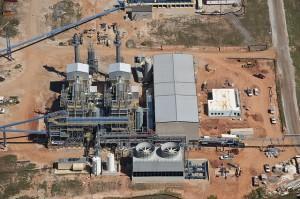 In a recent post I wrote about commitments made by APEC member economy ministers in their October 5 joint statement to implement a set of actions intended to facilitate the deployment of renewable and sustainable energy resources. Although the APEC Leaders Statement issued on October 8 did not include new breakthroughs related to sustainable energy, it is worthwhile exploring the recent activities of APEC members in this area.
In a recent post I wrote about commitments made by APEC member economy ministers in their October 5 joint statement to implement a set of actions intended to facilitate the deployment of renewable and sustainable energy resources. Although the APEC Leaders Statement issued on October 8 did not include new breakthroughs related to sustainable energy, it is worthwhile exploring the recent activities of APEC members in this area.
APEC has long served as a platform among Asia-Pacific economies for sharing best practices across priority policy areas, and energy is no exception. Earlier this year, APEC’s Expert Group on New and Renewable Energy Technologies submitted a report to the organization’s Energy Working Group on best practices in combining energy efficiency and renewable technologies in the industrial sector. Bearing in mind that renewable energy and energy efficiency can go hand in hand with thoughtful design and usage, the report cited an estimate that renewable energy resources, utilized efficiently, could supply as much as 23 percent of final energy use in the global manufacturing industry.
The report profiled 18 industrial plants and facilities across a diverse range of APEC economies to measure their performance, obstacles encountered, and lessons learned from their development and operation. Ten of these facilities were powered by biomass—considered by many to be one of the most practical approaches for increasing the near- to medium-term utilization within industry of highly efficient renewable energy-powered plants. Other facilities examined included plants powered by micro-hydro generation, solar, and wind power.
A noteworthy observation included in the report was that many obstacles encountered in introducing and developing renewable energy coupled with energy efficiency within the industrial sector are similar to those obstacles encountered when introducing any new and unconventional technology, rather than being unique to any particular form of energy. Challenges that governments can address through policies and other initiatives include information gaps; limited manpower and management capacity for implementing these technologies; high project startup costs; reduced cost competitiveness due to competition with fossil fuels; challenges in accessing capital; and institutional barriers such as inadequate or inappropriate incentives, regulations and administrative structures.
Drawing from these examples and lessons learned (a comprehensive list of which is included in the full APEC Expert Group report), the report presents a best practices “roadmap” that governments can implement to encourage the combined development of renewable energy and energy efficiency in industry. Components of this roadmap include:
- Industry-wide review to identify opportunities for developing renewable energy and energy efficiency;
-
Commitments to support these initiatives and develop action plans;
-
Develop policies to promote the introduction of these technologies by industry;
-
Promulgate relevant standards and regulations;
-
Facilitate access to technology and equipment;
-
Establish public and industry information campaigns about government goals and policies;
-
Build local technical capacity;
-
Develop financing packages and encourage private sector financing;
-
Introduce renewable energy and energy efficiency improvements in government-owned industrial facilities to lead by example; and
-
Maintain ongoing program management and monitoring.
Image Source: Savannah River Site, U.S. Department of Energy




